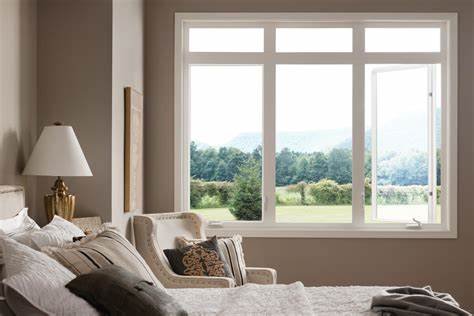When it comes to home improvements, window replacement and window renovation are often overlooked. However, installing energy-efficient windows can dramatically cut down your energy bills and enhance the comfort of your home. This guide will walk you through the process of choosing and installing the best energy-efficient windows for maximum savings.
Why Choose Energy-Efficient Windows?
Energy-efficient windows are designed to prevent your heating and cooling from literally going out the window. By investing in these windows, you can significantly reduce your energy consumption, leading to lower utility bills. Additionally, they help maintain a consistent indoor temperature, making your home more comfortable year-round.
Understanding Energy-Efficient Windows
What Makes a Window Energy-Efficient?
Energy-efficient windows typically feature multiple panes of glass, low-emissivity (Low-E) coatings, and gas fills between the panes. These elements work together to provide better insulation compared to standard windows. The frame material also plays a crucial role, with options like vinyl, wood, and fiberglass offering varying levels of efficiency and durability.
Benefits of Energy-Efficient Windows
- Lower Energy Bills: By reducing the amount of heating and cooling needed, these windows lower your energy bills.
- Improved Comfort: Consistent indoor temperatures make for a more comfortable living environment.
- Reduced Carbon Footprint: Using less energy contributes to a greener planet.
- Noise Reduction: Enhanced insulation also means less outside noise, creating a quieter home.
Choosing the Right Energy-Efficient Windows
Consider Your Climate
Your geographic location greatly influences the type of energy-efficient windows you should choose. In colder climates, windows with high insulating properties (high R-value) are essential. Conversely, in warmer regions, windows with a low solar heat gain coefficient (SHGC) are more beneficial to block excessive heat.
Window Ratings and Certifications
Look for windows that have been certified by recognized bodies such as ENERGY STAR. These certifications ensure the windows meet strict energy efficiency standards. The National Fenestration Rating Council (NFRC) label provides details on various performance metrics, helping you make an informed decision.
Frame Material Options
- Vinyl: Affordable and low-maintenance, but may not offer the highest insulation.
- Wood: Excellent insulator but requires regular maintenance.
- Fiberglass: Durable and energy-efficient but can be more expensive.
- Composite: Combines the benefits of wood and vinyl for high efficiency and durability.
Steps to Install Energy-Efficient Windows
Preparation
Before diving into window installation, proper preparation is key. Measure your existing windows accurately to ensure you order the correct size. Additionally, check the condition of your window frames; if they’re damaged, you might need to replace or repair them before installing new windows.
Removing Old Windows
Carefully remove the old windows without damaging the surrounding structure. This step involves cutting through any caulking and prying out the old frames. It’s a good idea to have a professional handle this to avoid any potential damage.
Installing New Windows
- Place the Window: Set the new window into the opening, ensuring it’s level and plumb.
- Secure the Window: Use screws to fasten the window securely in place.
- Insulate: Fill any gaps around the window with expanding foam or fiberglass insulation to prevent drafts.
- Seal: Apply caulking around the exterior to seal out moisture and air.
Finishing Touches
Once the window is installed, add any necessary trim or molding to complete the look. Paint or stain the trim to match your home’s decor. Finally, clean the windows and check for any drafts or leaks.
Maximizing Your Savings
Maintenance Tips
To maintain the efficiency of your new windows, regular maintenance is essential. Keep the glass clean and clear of any debris. Check the seals periodically to ensure they remain intact, and reapply caulking as needed to prevent air leaks.
Seasonal Adjustments
Adjust your window treatments seasonally to optimize energy savings. In the summer, use blinds or curtains to block out heat, while in the winter, keep them open during the day to allow sunlight to warm your home.
Financial Incentives and Rebates
Many governments and utility companies offer incentives and rebates for installing energy-efficient windows. These can significantly offset the initial cost of your investment. Research available programs in your area to take full advantage of these financial benefits.
Conclusion
Energy-efficient windows are a smart investment for any homeowner looking to reduce energy costs and increase home comfort. By understanding the features and benefits of these windows, choosing the right ones for your climate, and following proper installation steps, you can maximize your savings and enjoy a more energy-efficient home.


